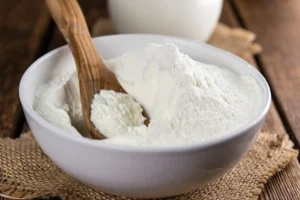
Fundamental change in European and New Zealand dairy production means that there will be a gap between the growth of demand for dairy products worldwide by 2035 and the ability to fill that need.
Read Also

World Dairy Expo 2024: Thursday Oct. 3 wrap up
Glacier FarmMedia’s Senior Livestock Editor John Greig is at World Dairy Expo 2024. In this video update, he talks about:…
European and United Kingdom dairy farmers produce about 160 million tonnes of milk per year, compared to 110 million tonnes per year produced in the United States, said Mary Ledman, Rabobank’s global sector strategist for dairy, during a presentation at the World Dairy Expo.
Why it matters: Part of the price Canadian dairy farmers are paid within supply management is determined by the world price for milk, so global trends affect Canadian dairy income.
EU plus UK producers supply 30 per cent of the global trade in milk. Those farmers started increasing production in about 2011 in preparation for the end of milk quotas in 2015. That increasing milk production continued until 2019 and it has since leveled off.
“When Europe changes by a per cent of two, it does have a real impact on the availability of products for the global markets,” said Ledman at a seminar put on by Rabobank for which it brought its analysts from China, North America, Europe, New Zealand, Australia and Brazil to the World Dairy Expo to talk about dairy production in their regions.
When milk prices were high in 2022 there was little expansion in production around the world, which was abnormal, says Ledman and that heralds potential stagnation of production.
Europe hits a ceiling
Indeed, the impact of the increase in European milk production has created environmental concerns in Europe and restrictions on dairy farms, especially in places like the Netherlands and Ireland have started.
There are challenges with farm succession and labour in Europe says Danielle Duijndam, Rabobanks European dairy analyst.
“You might have heard about the Green Deal plans from Brussels to have quite strict targets on, for example, climate, biodiversity, water, not to forget animal welfare, and that will have an impact going forward, on the dairy herd in Europe and also milk production,” she says.
There are dairy farmers who will have a bright risk in Europe, including in Poland where modernizing dairy farmers are increasing production, but Duijndam says “we will also lose some through farm consolidation, but also a lot of dairy farmers stepping out of the business with legislation coming up.”
Oceania
Environmental legislation restricting dairy farm growth because of water resources is already in place in New Zealand, says Emma Higgins, Rabobank’s dairy analyst in New Zealand. Next will be restrictions based on methane production.
That means that New Zealand and its 30 per cent of global milk trade will not grow and could shrink.
Australia’s growth is limited by chronic drought in areas where dairy once was a leading agricultural commodity.
China
New Zealand’s dairy demand has also been influenced by China’s growing domestic milk production, which has displaced some of its imports.
China had set a goal of increasing its production by 11 million tonnes of milk per year and it has done that, says Michelle Huang, the agriculture lender’s analyst based in Shanghai.
Milk demand has stalled in China, she says and that will slow domestic milk production growth. Feed costs are a major issue for China and that has pushed smaller farms, under 100 cows, out of business.
She expects milk production to continue to increase, but slowly, so China will continue to rely on milk imports.
The Americas
The United States is expected to continue its slow growth in milk production, says Lucas Fuess, Rabobank’s analyst for North America. He showed a graph that illustrated the long, gradual increase in American milk production.
Most of the growth in milk has been in production per cow, even as cow numbers have declined, says Fuess.
The United States could add another 19 million tonnes of milk production by 2035. Brazil could also add another five million tonnes, but it would mostly be used by the domestic market there. Together the increases in the Americas won’t offset declines in Europe and New Zealand, says Ledman.
Population growth and production declines in some areas mean there will be about 20 million tonnes of milk demand in the world that will need to be filled, she says. And at this point, no area of the world is an obvious candidate to fill it.








